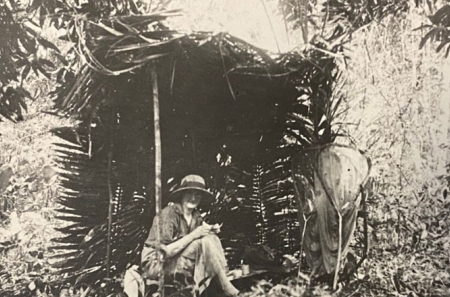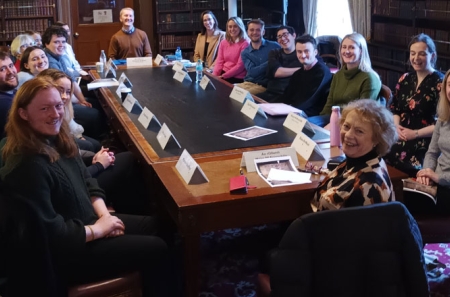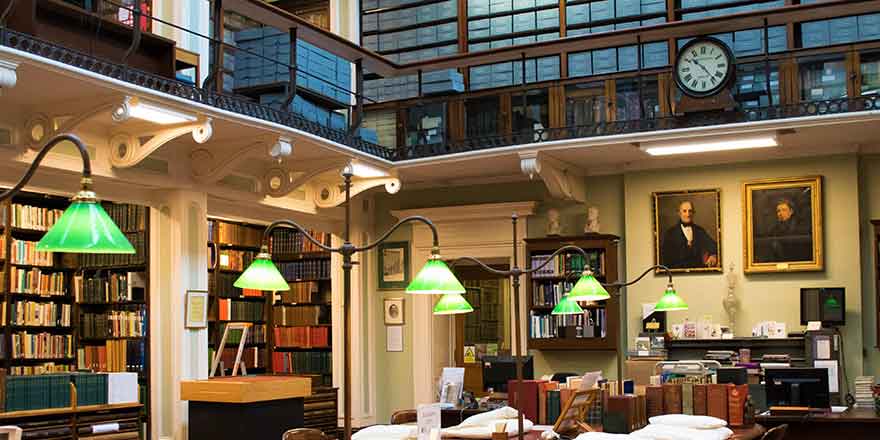
Tick tock goes the Library’s reading room clock
28 January 2022Latest Library Blog post. Anita Cooper looks at the clock in the RIA reading room and its maker J. Booth & Son of Dublin.
A new year conveys the idea of time moving on – another year has passed. The sound of silence in the library reading room is an opportunity to reflect on the past with an eye to the future . The only noise heard is the ticking of the clock. Hanging overhead, its face oversees the activity below. Let’s now consider the history of this clock and its maker.

View of the reading room from the clock
In 1851, the Royal Irish Academy moved to its present location at Academy House on Dawson Street and over the next three years added the Reading Room and Meeting Room to the rear of the building. As Hayden writes in the preface of Chats on Old Clocks, ‘There is no house without its clock or clocks’. The RIA council meeting minutes of Monday, 3rd November 1856 records that £7 be paid for the library clock.
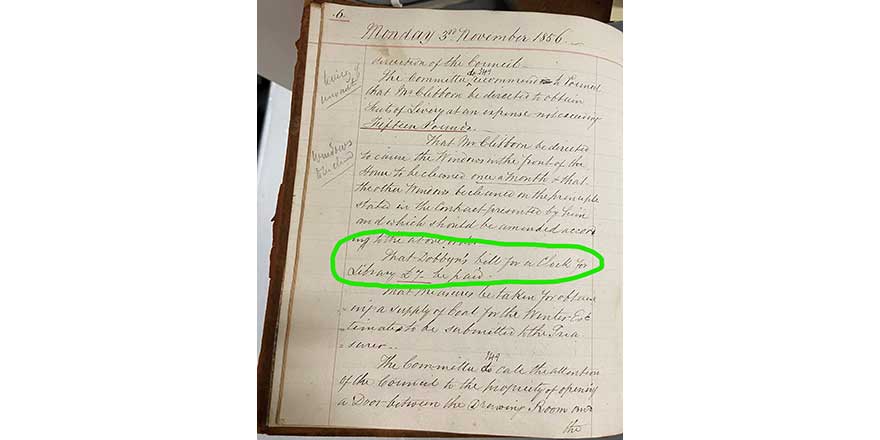
RIA council minutes, vol. X, pg.6 dated 03/11/1856
The clock is encased in mahogany. A black dial, hour/minute hands and roman numerals are set against a white face giving it a classical appearance. The name of the clockmaker – J. Booth & Son of Dublin – is printed in the middle of the face. The clock is centrally positioned in the reading room on the gallery level rail between the balustrades for readers to see and hear. As a mechanical spring-driven clock with a pendulum, winding is required periodically to ensure it keeps running and displaying the time accurately. Pendulum clocks were widely used up to the early 20th century and known for their precision.
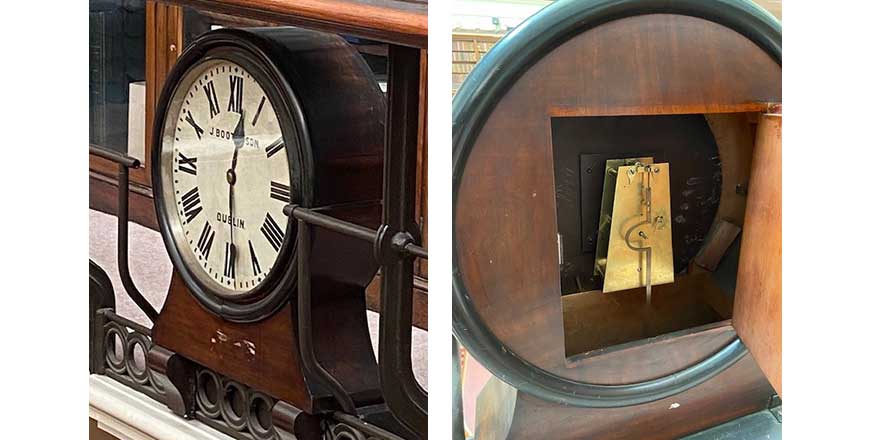
Close up and inner workings of J.Booth & Son clock
James Booth and his son, also named James, were watch and clock makers located nearby at 4 Stephen’s Green from approximately 1841 to 1868. Today, this site is a coffee shop which one can also while away the time reading and working. Their clocks are still found around Dublin if you look carefully. There is beautiful blue, black and gold one housed in the fanlight at the entrance to the Royal College of Surgeons Ireland (RCSI). Another one, commissioned by the Guinness family, is seen in the clock tower of the walled garden of St. Anne’s Park.
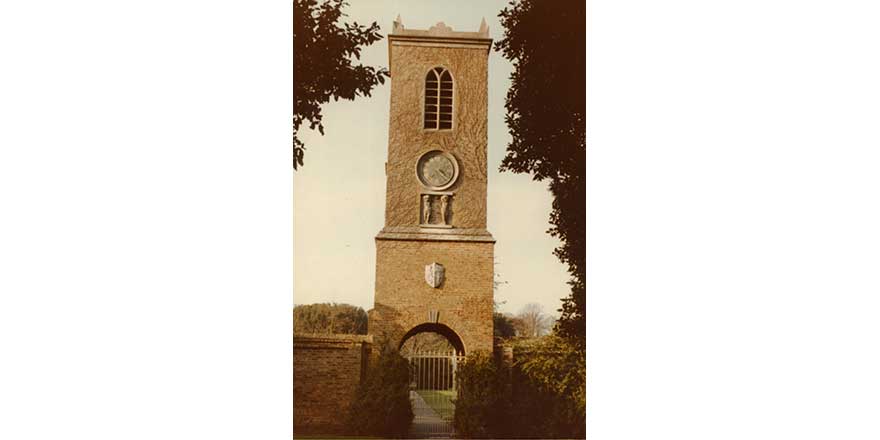
St. Anne’s Park clock tower (South Dublin County Library https://hdl.handle.net/10599/1257)
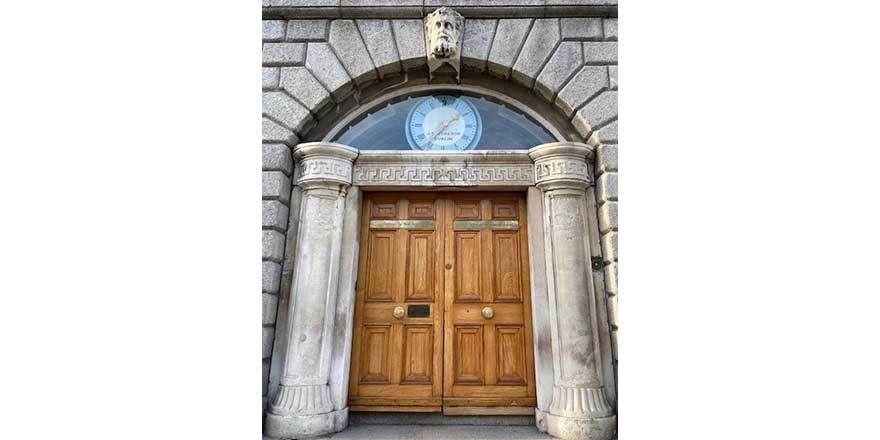
RCSI entrance at 123 Stephen’s Green
In 1865, J. Booth and Son participated at the great Dublin International Exhibition of Arts and Manufactures. Exhibition Palace was specifically-built to host the event at Earlsfort Terrace and nowadays is home to the National Concert Hall. The Illustrative record and descriptive catalogue of the Dublin International Exhibition of 1865 records the exhibitors and exhibits, awards, and medal winners. The clock entered by James Booth & Son won both a jury award and medal. The jury award notes that their clock was the only one still keeping time for the duration of the exhibition from May to November! The medal was awarded for ‘excellent workmanship and design of his turretclock, also for cheapness.’
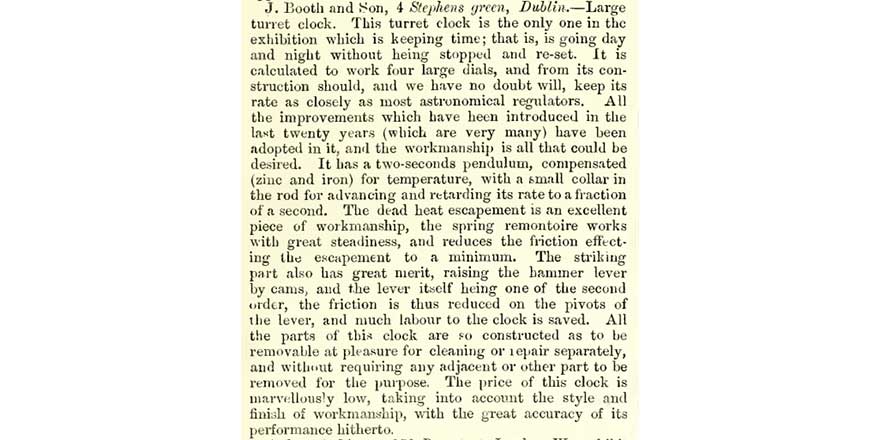
Catalogue page of jury award to J. Booth and Son (Internet Archive)
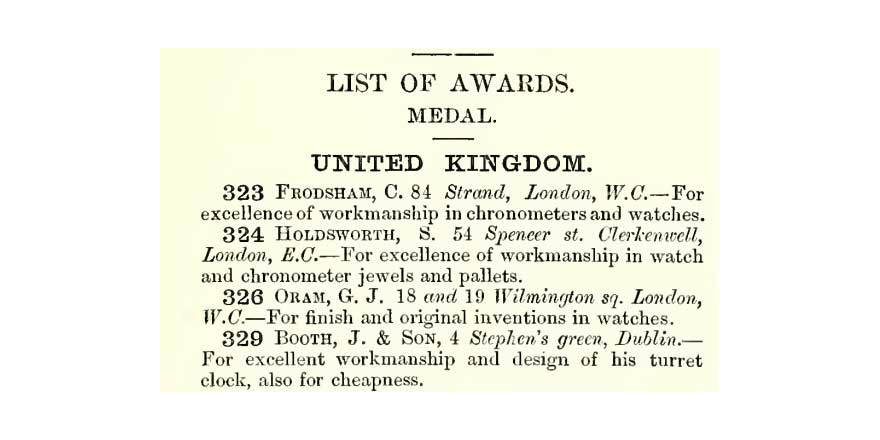
Catalogue page of medal for J. Booth and Son (Internet Archive)
So, returning to our lovely clock in the reading room, one of the staff procedures is to ensure that the clock is wound about once a week and displaying the correct time at the start of the day. That certainly has been the case for over 160 years and this particular clock is still keeping time in the reading room, albeit, with a little help from library staff!
Many a maker left his graven name,—
That by your leave stands yet on dial plate,—
With legend Fecit, of uncertain date,
Proud with the hope that time would bring him fame.
Death stopped the wheels of maker and machine:
Time! will you not their memory keep green?
[Hayden, Arthur. Chats on Old Clocks. London: T. Fisher Unwin Ltd., 1917.]
Anita Cooper, Assistant Librarian

